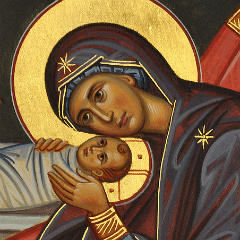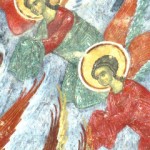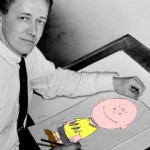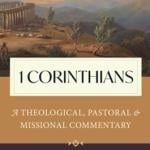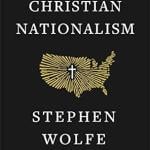The church has long used iconography to teach and proclaim the gospel. And the Icon of the Nativity, laden thick with theological symbolism and biblical references, can help us better understand and appreciate the mystery of the Incarnation.
I have here two examples of the icon, with some explanation for the key imagery. The first is by Theophanes the Cretan, an iconographer who worked in the first half of the sixteenth century. The second is from the Russian Novgorod school of the late fifteenth century.
Notice the ray of light extending down the upper middle of the image. It originates from heaven, encircles the Star of Bethlehem, and then breaks into three beams; this not only proclaims the reality of the Trinity, but also identifies the real source of authority and revelation. As the hymn of the feast says, “Thy Nativity, O Christ our God, has shown to the world the light of wisdom. For by it those who worshipped the stars were taught by a star to adore Thee, the Sun of Righteousness.”
The light illuminates the Christ child, who lies wrapped in swaddling clothes in a stone manger. More on this in a moment.
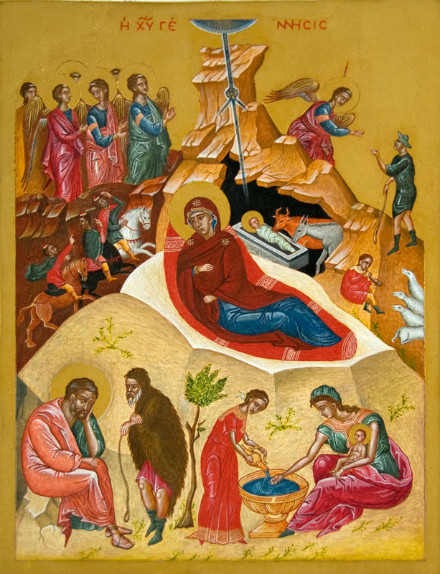
The most dominant figure in the icon is Mary, reclining after giving birth to the Savior. Her prominence reminds us that she is central to the story, the woman whose body became a temple for God, the woman whose flesh gave form to the Lord. There is no gospel without the Mother of Christ.
An angel, usually positioned in the righthand corner, informs a shepherd about the Christ child, while other angels join him to offer praises. Their hands are draped by their robes, an iconographic device to indicate reverence.
It’s important to note that icons do not capture historical moments like photos; they present theological truths like sermons. So while, the magi did not come at the birth of Christ but later, they here enter the frame from the left with their gifts. Sometimes they are on foot, other times on horseback, indicating their long journey to worship the king.
The same point might apply to the ox and donkey. There’s no record in the gospel of what livestock was present at the Lord’s birth, but Isaiah 1.3 says, “The ox knows its owner, and the ass its master’s crib. . . .” Their presence overlooking the manger is a means by which rebellious Israel is contrasted with the faithful Christ.
This faithfulness is further highlighted by the vision of the swaddled Christ, helplessly frail and little. The icon proclaims the mystery of the Incarnation: that God lowered himself and became really and truly man. He, as Paul tells us, “made Himself of no reputation, taking the form of a bondservant, and coming in the likeness of men. . .” (Phil 2.7) The same point is echoed at the bottom of the frame where midwives clean the baby. He is divine, yes. But he is also human.

Joseph sits near the midwives, head in hand, downcast and forlorn. A man has approached and tempts him with doubts about whether the child is really divine, whether Mary has in fact been unfaithful. The man is the devil, and Mary’s prayers (notice how she looks on at Joseph) overcome Satan’s suggestions.
This child, upon whom the divine light of the Trinity shines, is truly the Son of God as the angel had said. This child is genuinely the savior of Israel. To underscore the point, the icon puts a bush near Joseph, a reference to Isaiah 11.1: “There shall come forth a shoot from the stump of Jesse, and a branch shall grow out of his roots.”
Christ is the fruit of the tree of Jesse. He’s the son of David who will ascend the throne. But he will do so through the grave, as the cave and the swaddling clothes also invite us to contemplate. The swaddling clothes look like grave windings, the manger like a sarcophagus, and the cave like the Arimathean’s new tomb. The Icon of the Resurrection completes the scene. From the cave Christ will emerge holding Adam and Eve by the wrist, Satan bound beneath his feet. But the Icon of the Nativity foreshadows the drama to come.
Another thing, a central thing, in the images above is something our priest reminded us about in his Christmas homily. Most every element in the icon bends inward, as if bowing to the Christ child, humbled by his profound humility, bowed by his stooping. May I always do the same.

